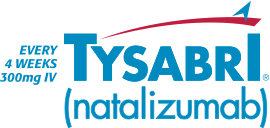THE LARGEST ONGOING REAL-WORLD STUDY OF RRMS PATIENTS ON TYSABRI REINFORCES THE ESTABLISHED SAFETY OF TYSABRI FOR UP TO 15 YEARS1
Study description: The TYSABRI Observational Program (TOP) is a 15-year, multinational (ex-US), prospective study observing 6321 patients with relapsing-remitting multiple sclerosis (RRMS) initiating TYSABRI in real-world clinical practice settings. The study assesses the long-term safety of natalizumab treatment. Secondary endpoints evaluate MS disease activity including ARR.1-3
Study limitations2:
- This study is observational, without randomization or a placebo control group
- Attribution bias is inherent in long-term observational studies
- Results should be interpreted with consideration for treatment practices that may vary by country
ARR reductions (87%-94%) were observed regardless of baseline disease activity or number of prior DMTs1
ARR BY NUMBER OF RELAPSES IN THE YEAR PRIOR1
ARR BY NUMBER OF PRIOR DMTs1
The TOP study was funded by Biogen.
